Airbus Defense and Space

Faris Ustamujic
Senior Engineer
1
The potential of using carbon nanotubes (note: OCSiAl graphene nanotubes) is still to be explored, and it is quite promising. The material has fascinating properties. The results we achieved with TUBALL (note: OCSiAl graphene nanotubes) were better than we expected. They are very-very good.
2
Starting from carbon black, it has proximity to percolation and hots-spots as disadvantages and we found solution and it is smoother material SWCNT (note: OCSiAl graphene nanotubes)! And we give it a shot! Carbon black 25 times bigger than SWCNT in terms of particle size. TUBALL appear to have a much stronger effect on the conductivity and very homogeneous product comparing to carbon black.
Resource
Mahindra CIE Automotive Limited


Romesh Kaul
CEO – Stampings, Forgings & Composites Businesses
1
We’ve been testing nanotubes and we’ve got good results in the areas of conductivity and improvement of strength of materials.
2
I think that potential (of graphene nanotubes) is very-very significant.
Resource
Lufthansa Technik Intercoat

Melina Remers
Material Design Engineering
1
SWCNT (note: OCSiAl graphene nanotubes) could create a new life of aircraft components due to conductivity properties. We apply it as coating with INTERFILL (our product). There are no negative effects in wear rate, thermal resistance, and bonding strength and this is important for us and for our customers. No isolated nanotubes are released from the final material in drilling and griding test.
Resource
Arrival

Rob Thompson
Chief of Materials
1
Just in terms of material development there is obviously big opportunities in things like antistatic behavior, electrostatic behavior in coating systems, ultimately improving mechanical properties would be a big win for us where we can replace metals with lightweight (materials) and optimize manufacturing. Carbon nanotubes (note: OCSiAl graphene nanotubes) present many opportunities to increase efficiency, reduce weight, improve impact protection, minimize waist.
2
When we talk about vehicle crash performance or embedding sensors into coatings, single wall carbon nanotubes play an important role there. We want to integrate functionalities into the materials without adding processes. And using single wall nanotubes could help us with that.
Resource
Trelleborg Applied Technology


Adam Nevin
Innovation Lead
1
We reduce the cross section of wind turbines by TUBALL nanotubes (note: OCSiAl graphene nanotubes) we using to mix with materials because they essentially interact the electrical magnetic wave of the radar and they help us to reduce outer thickness of incredibly thin material from many centimeters just down to millimeters.
2
We find TUBALL as incredible useful in our products. Trelleborg is exploring the full range of benefits which SWCNTs (note: OCSiAl graphene nanotubes) can bring to the industry to ensure we maintain our position as a world leader in engineered polymer solutions.
3
Our company is in the process of developing thermoplastic nanocomposites for new recycling pathways using graphene nanotubes. This solution can dramatically help to change the world regarding sustainable development
Resource
Amprius


Cen Wang
(Nanjing) Vice President and Director of R&D Center
1
“SWCNTs (note: OCSiAl graphene nanotubes) create a cocoon around the electrode particles, making a uniform network that strengthens the electrode. That leads to a silicon anode with excellent cycle stability and with energy density of more than 300 Wh/kg in EV battery application. With just 0.1% of TUBALL (note: OCSiAl graphene nanotubes), we have the best cycling stability.”
Resource
Daikin Industries


Chihiro Shinoda
PD Battery Materials
1
Comparing to conventional cathodes, electrodes with TUBALL (note: OCSiAl graphene nanotubes) have dramatically improved conductivity and significantly increased adhesion. While the optimal content of TUBALL nanotubes in cathode is 0.08%. They act like bridges for the electrode structure.
2
Combination of DAIKIN new binder with TUBALL gives excellent performance. This solution allows to increase amount of cathode active material, resulting in higher capacity, better adhesion, improved conductivity, flexibility and slurry stability.
Resource
Daikin Industries


Junpei Terada
Marketing Section Manager
1
By using a very low amount of TUBALL nanotubes (note: OCSiAl graphene nanotubes) in fluoroelastomers, we can dramatically increase the tear strength, conductivity and modulus. While in contrast to carbon black, single wall carbon nanotubes (note: OCSiAl graphene nanotubes) do not impact elongation, hardness and compression set.
Resource
Shenzhen BAK Power Battery


Dr Jian Lin
Vice President
1
Single wall carbon nanotubes (note: OCSiAl graphene nanotubes) can improve the cycling performance to a very great, huge extent. I think that they have the biggest advantage for application in silicon anodes, compared with other additives.
Resource
2
Due to their high aspect ratio and G/D ratio, dispersed nanotubes can be very effective in batteries. In the cathode, nanotubes used at a low dosage can improve cathode efficiency, energy density, capacity, storage performance and cycle life. Cycle performance results of SiOx anodes are even more amazing. The addition of single wall carbon nanotubes in anodes hugely reduces capacity loss with ageing and improves cycle life.
Resource
3
We use single wall carbon nanotubes on both the cathode and the anode to achieve better performance compared to typical carbon black.
Resource
LANXESS


Maximilian Kohl
1
With new carbon nanomaterials, carbon nanotubes (note: OCSiAl graphene nanotubes) we can get more performance to the products that our customers need.
2
Carbon nanotubes in rubber articles such as tires and other technical rubber goods will be play very important role.
Resource
Shinshu University


Morinobu Endo
One of the pioneers of the discovery of carbon nanotubes
1
Single wall carbon nanotubes (note: OCSiAl graphene nanotubes) are the key to a comfortable life for humanity in the future. They have proved to have fantastic properties and performance compared with all the other nanomaterials discovered over the last century.
Resource
Dynic Corporation


Ryo Asano
Chief Developer
1
We believe that these nanotubes can effectively replace expensive ITO in touch panels and solar cells.
Resource
Nagase ChemteX


Shingo Shinohara
1
We investigated most of the types of conductive additives, including graphite and multi wall carbon nanotubes, but we’ve chosen single wall carbon nanotubes (note: OCSiAl graphene nanotubes) as the most suitable solution.
Resource
